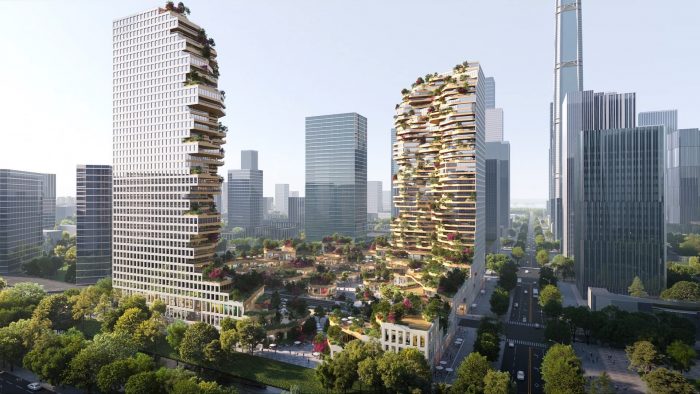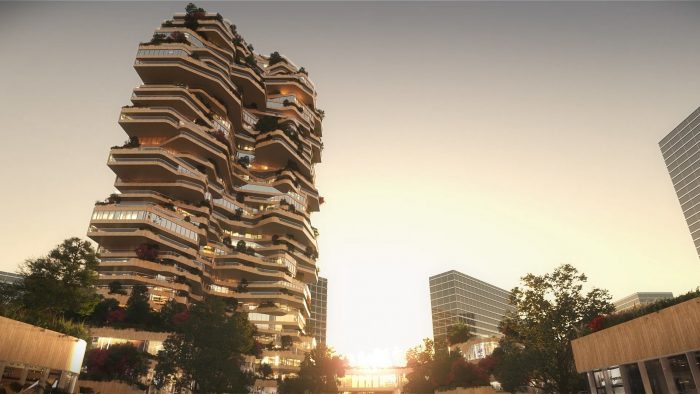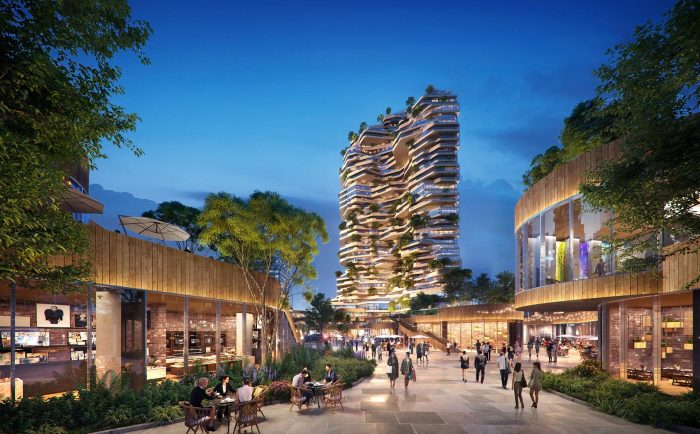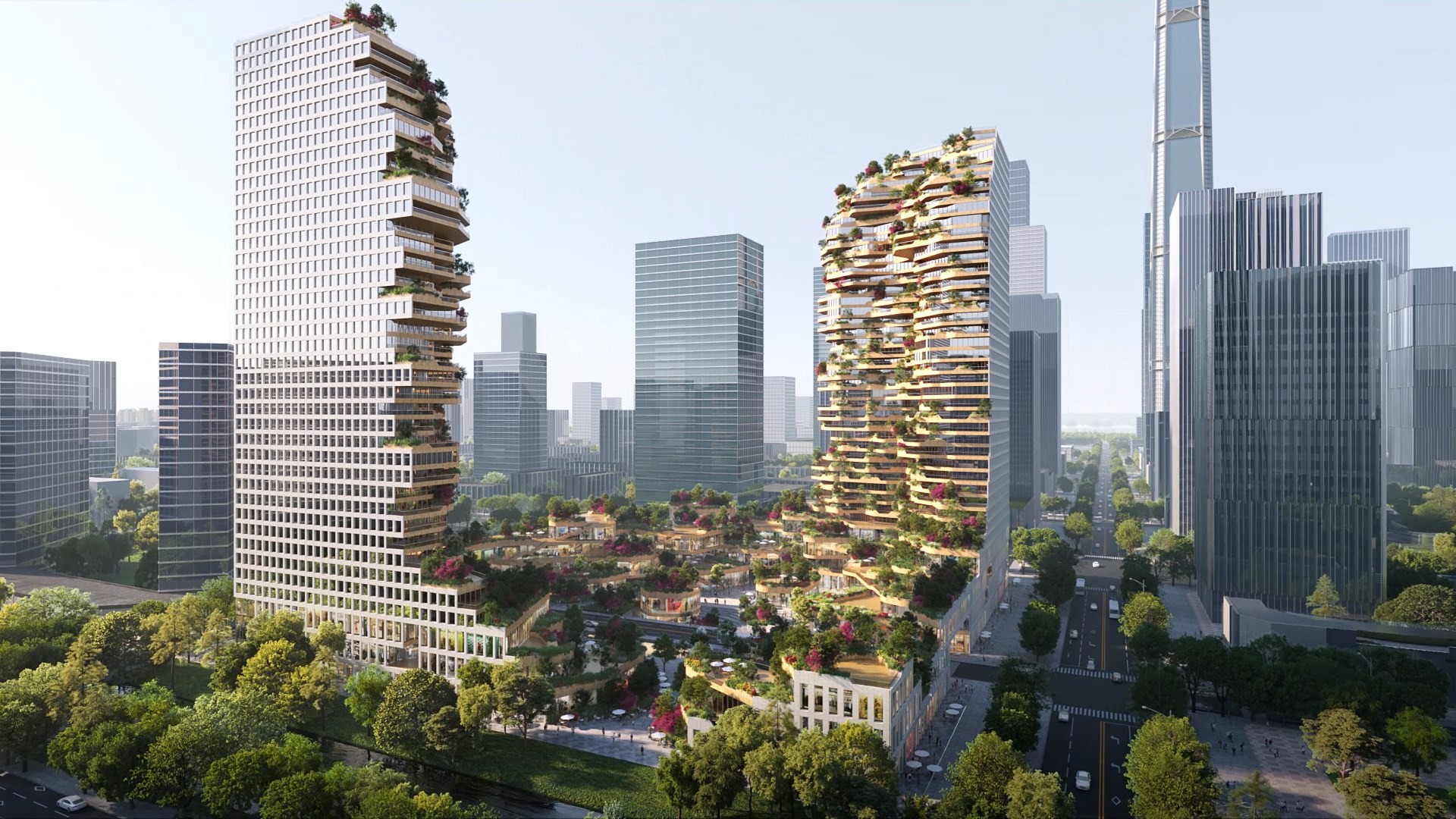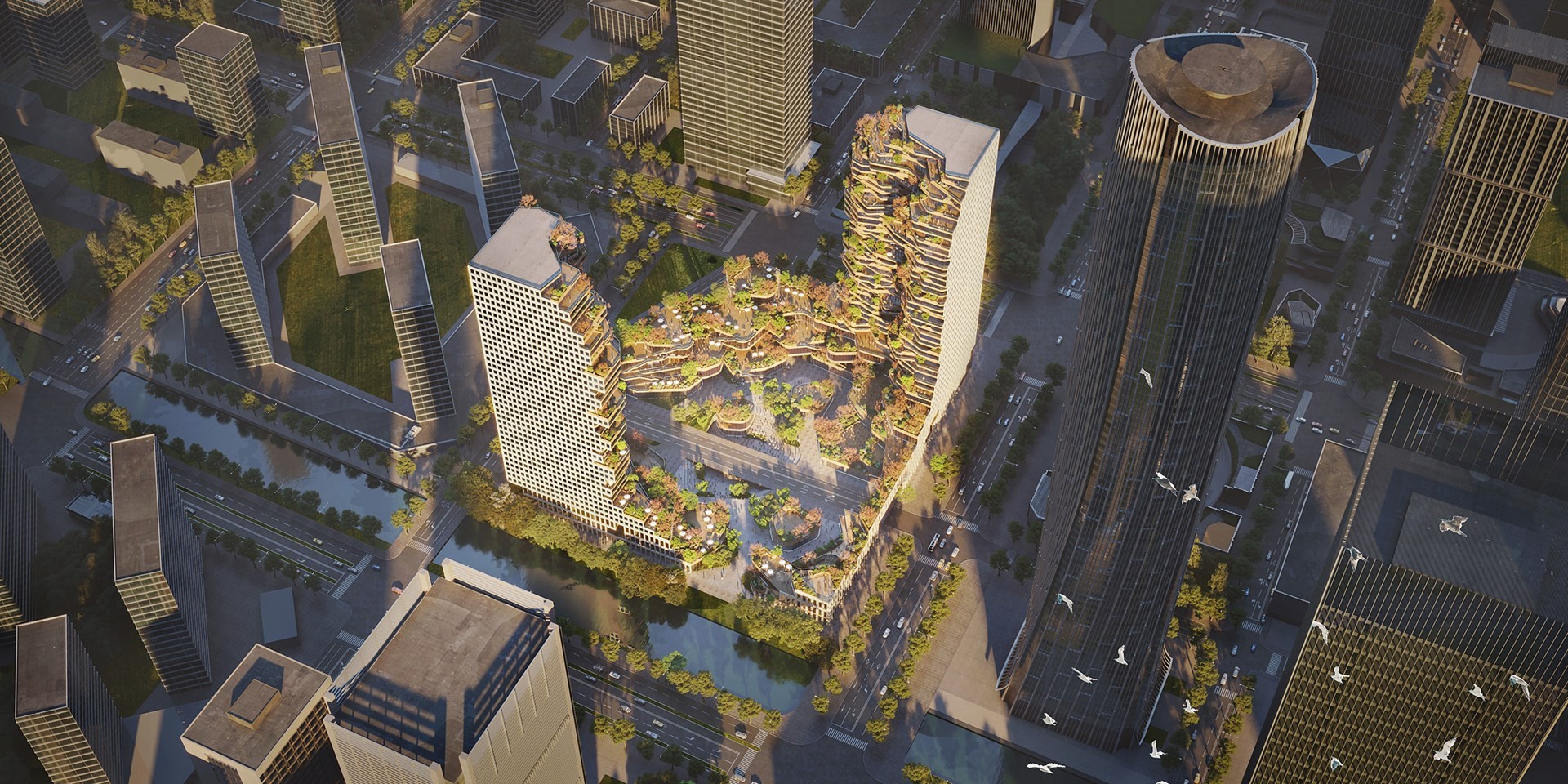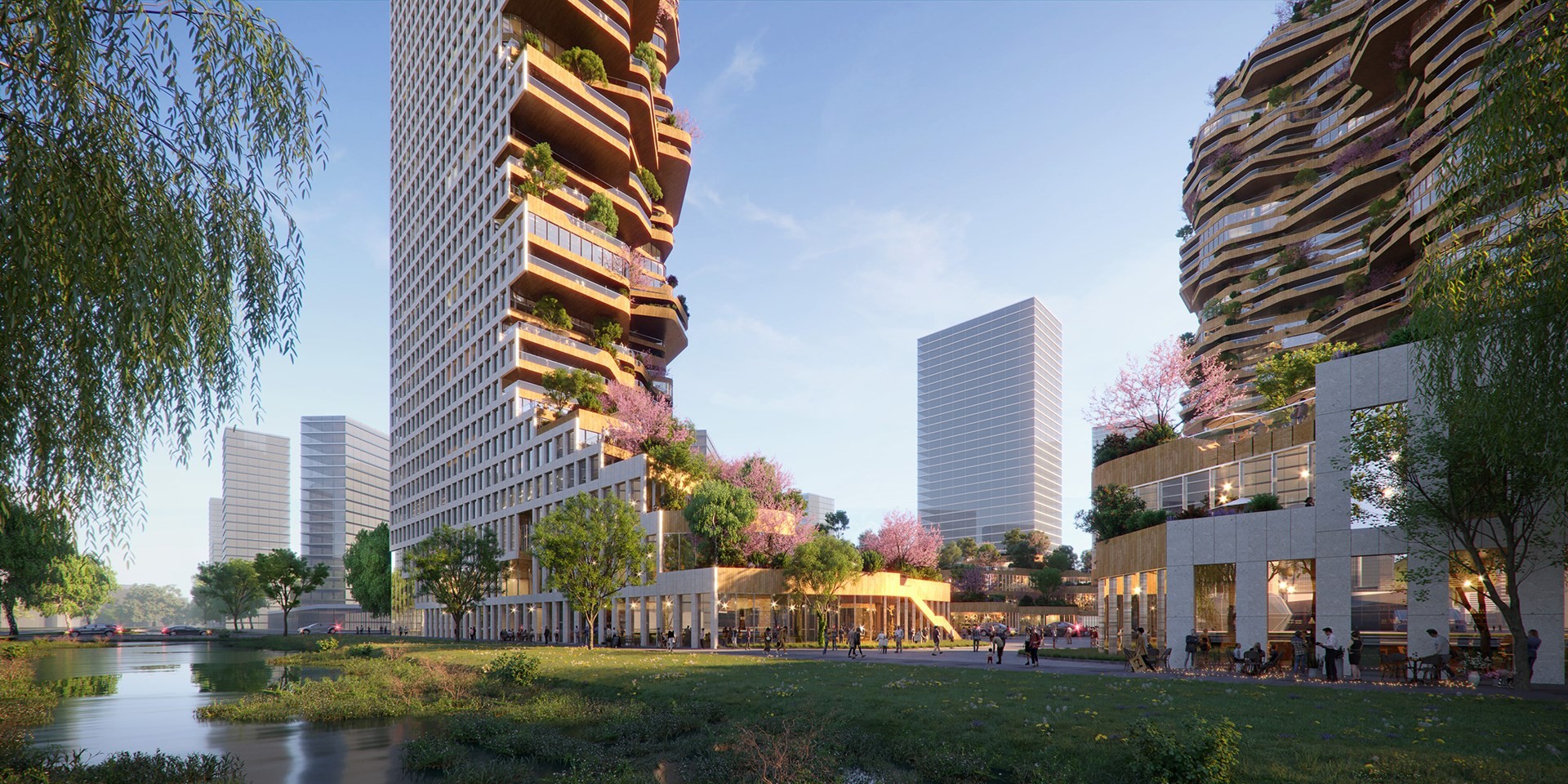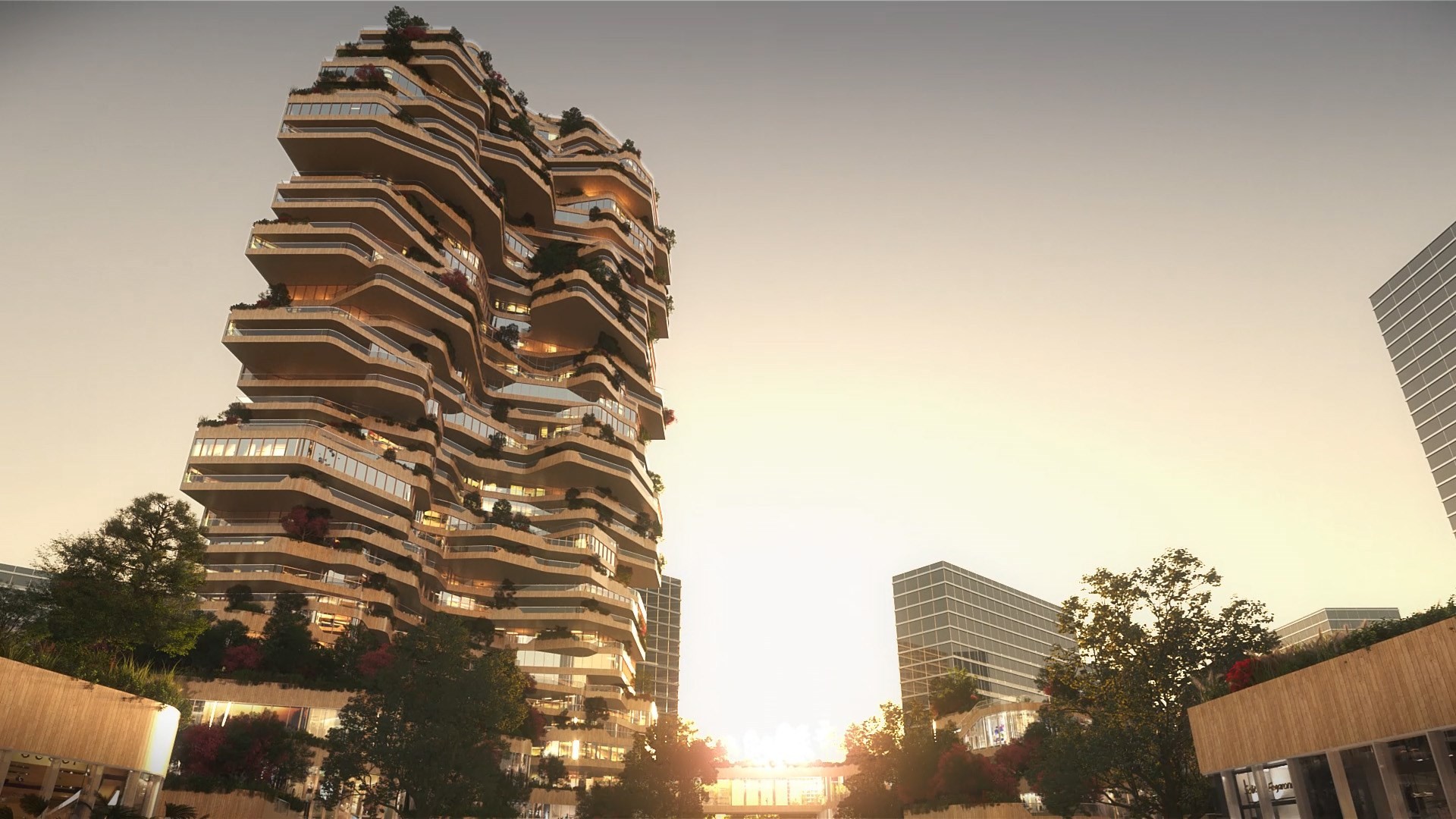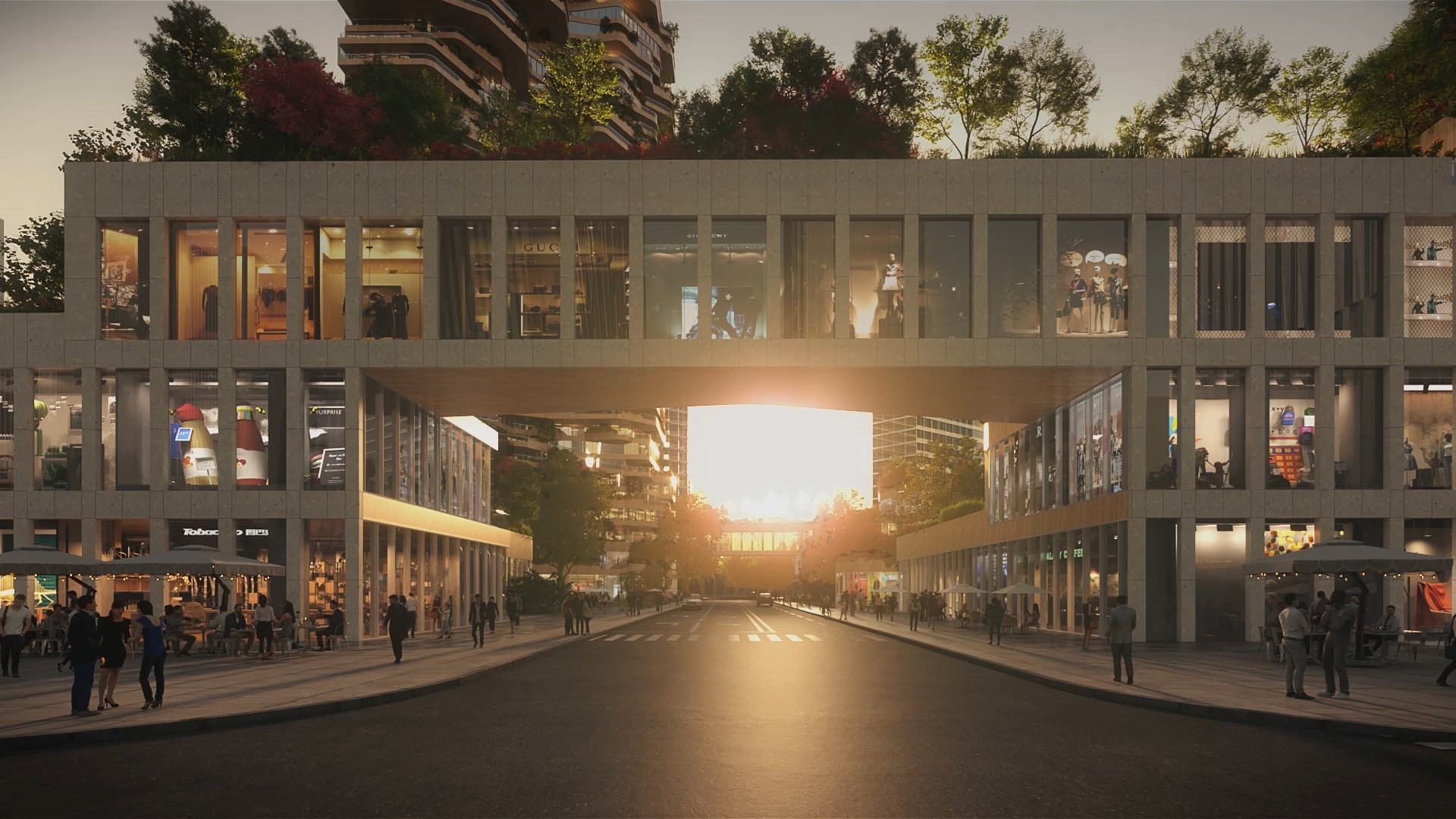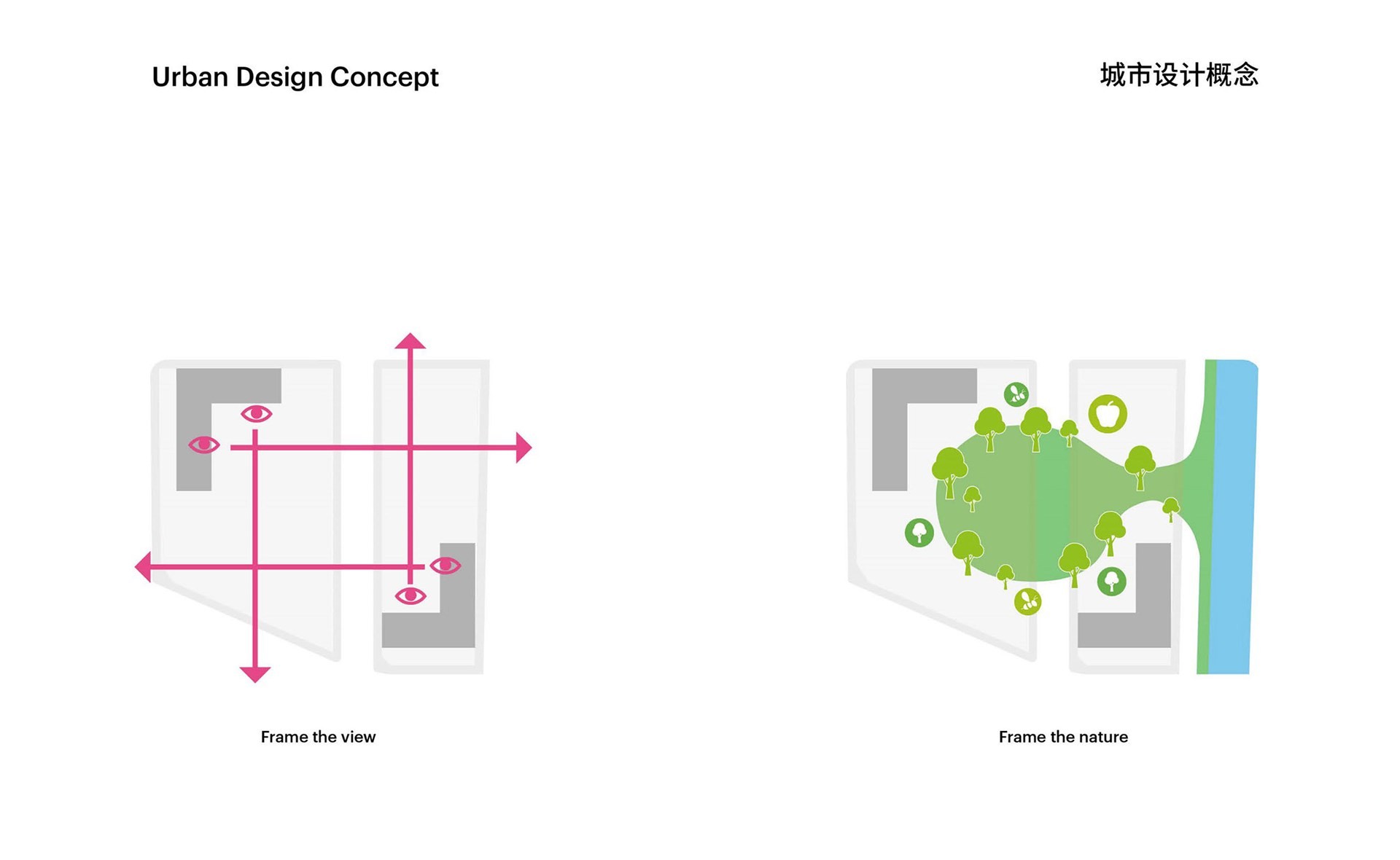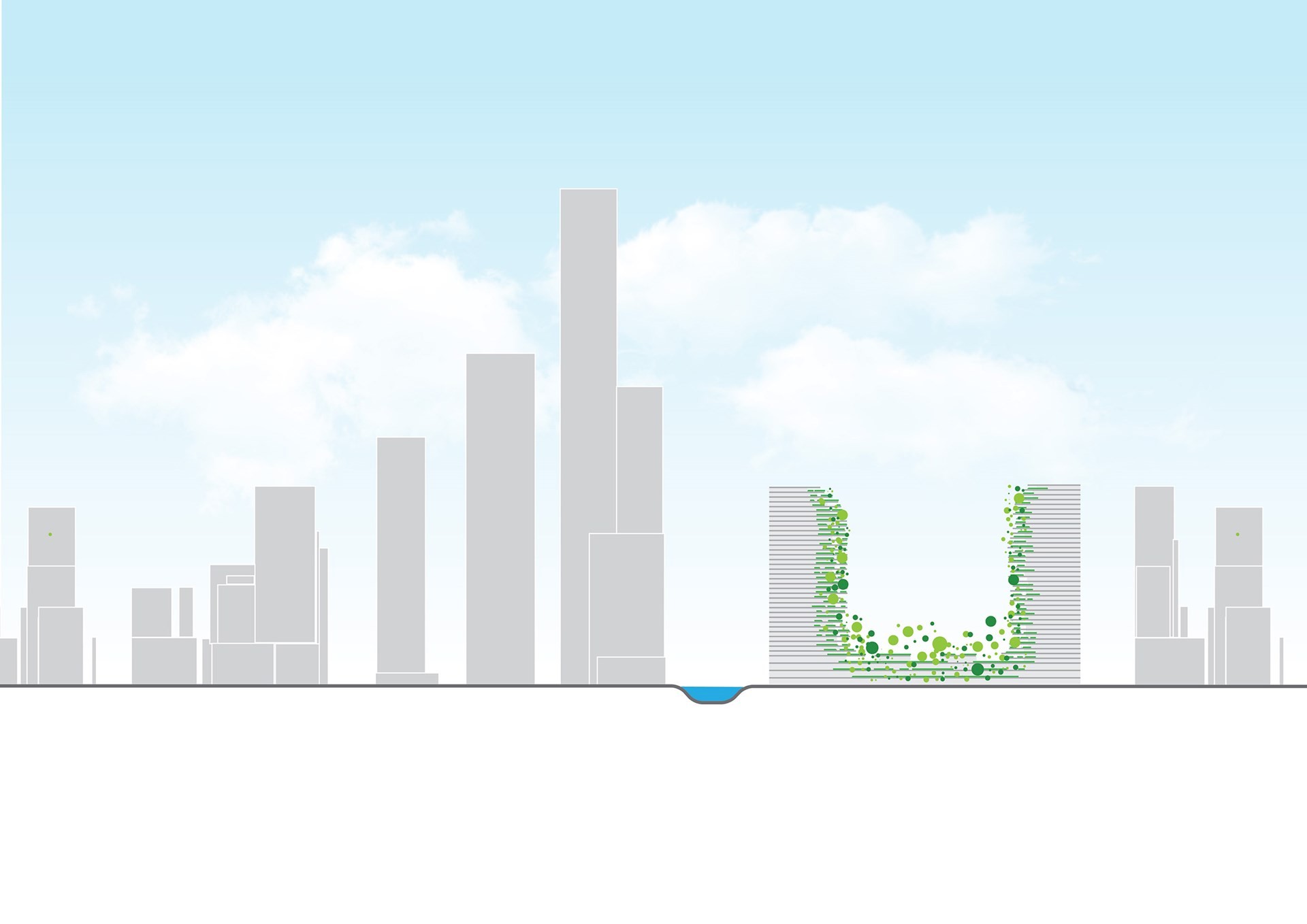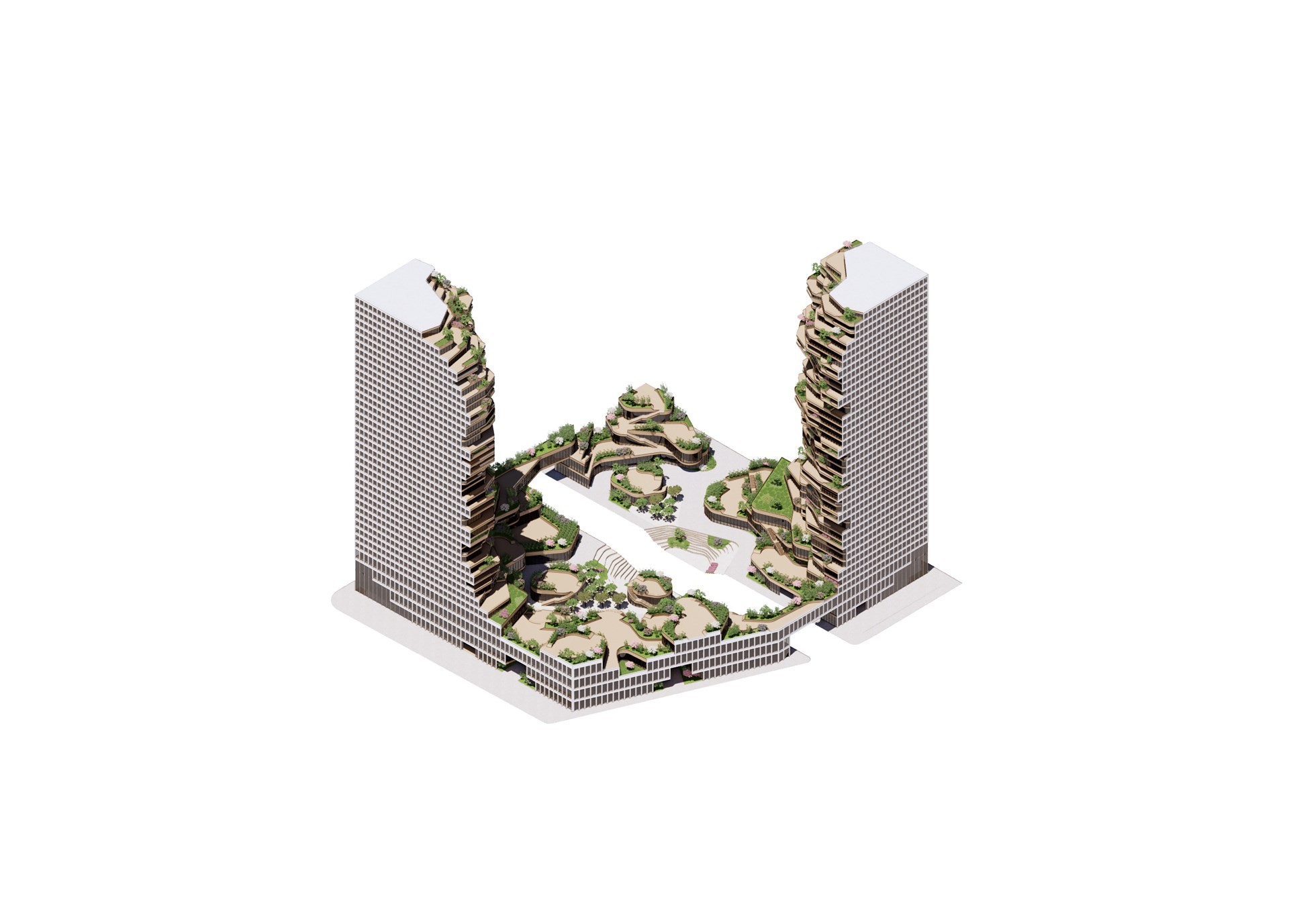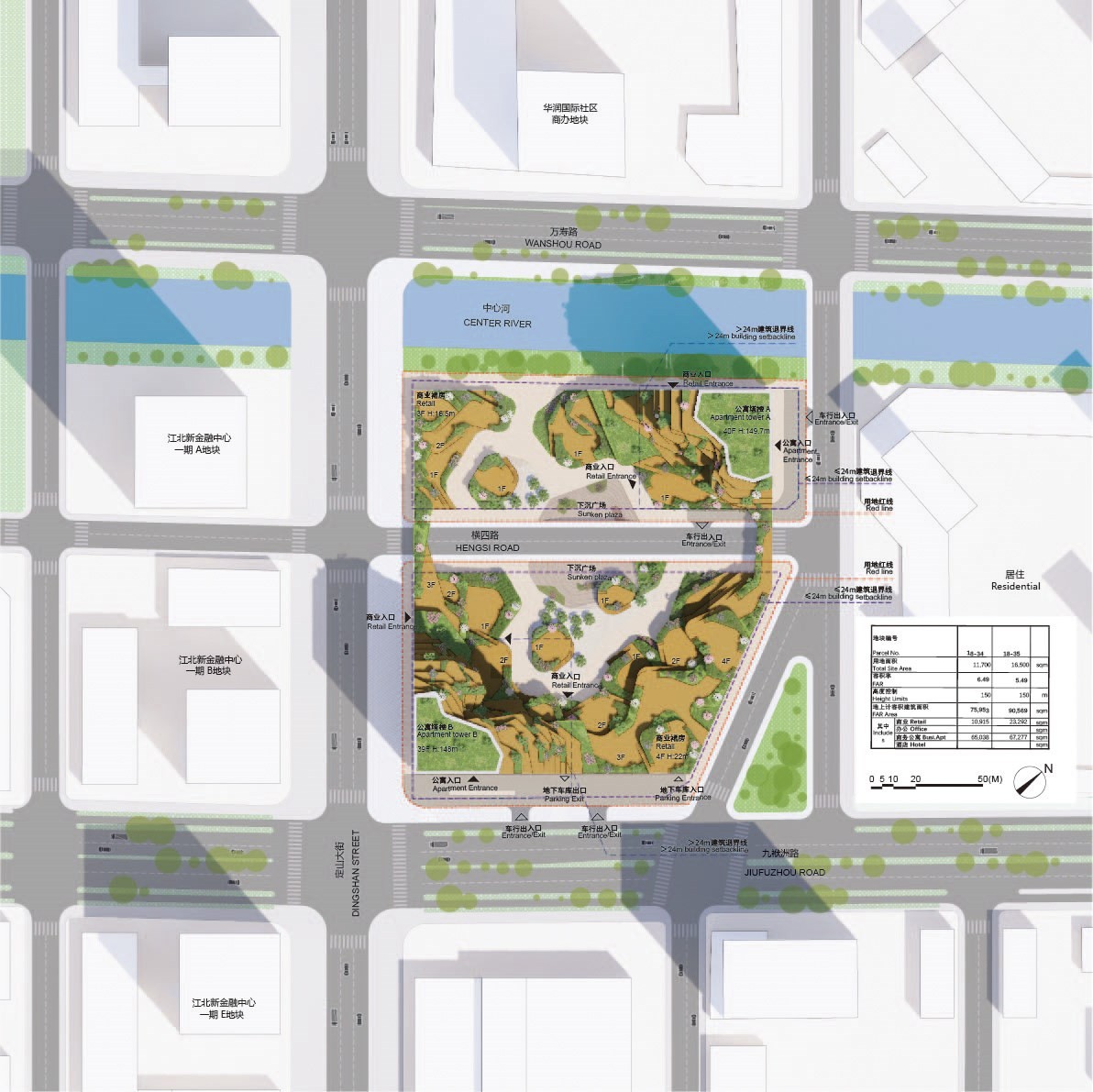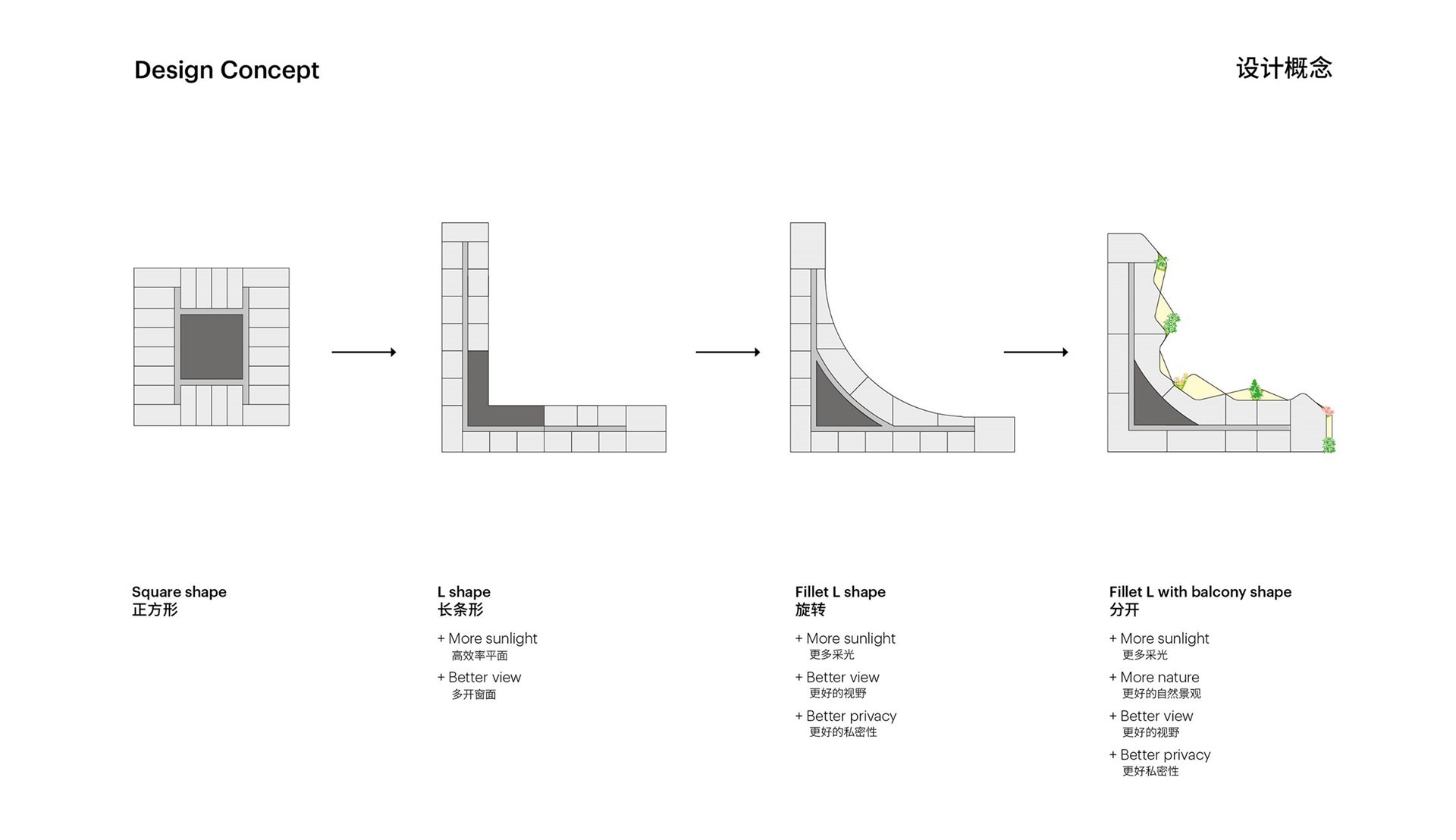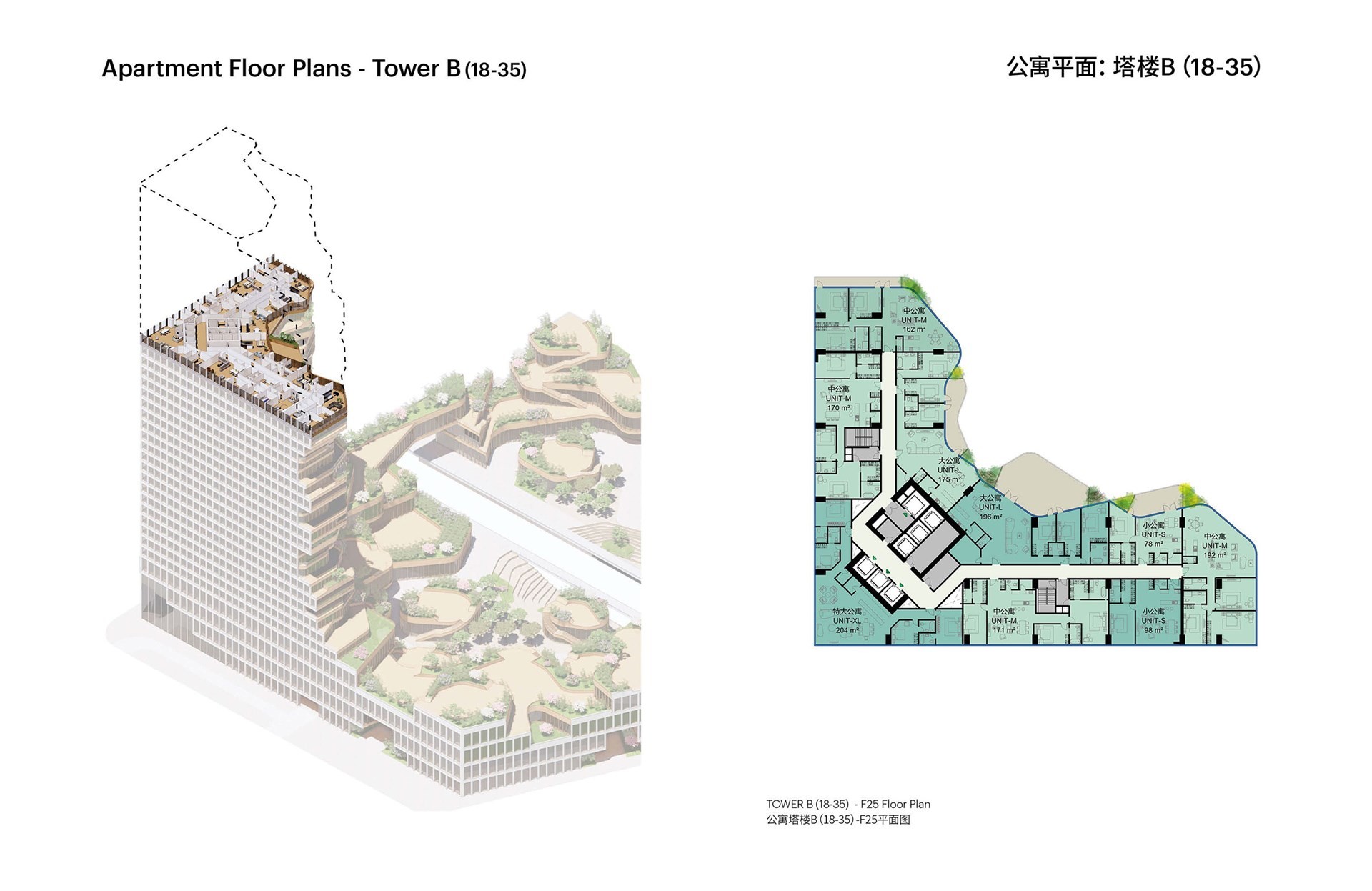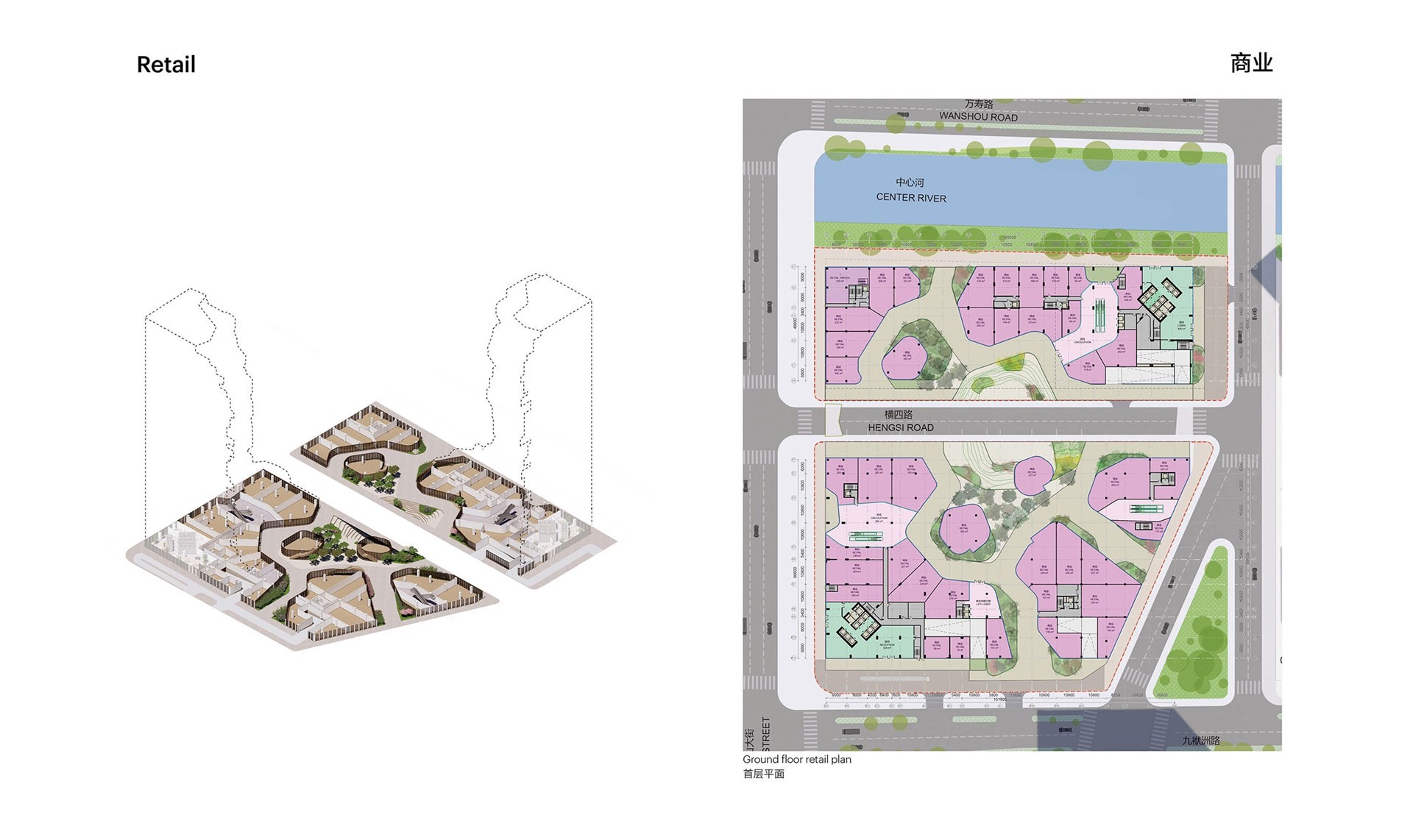The Chinese metropolis of Nanjing is growing rapidly. To enable this growth, in 2015 the government formed the Jiangbei New Area, expanding Nanjing to the west across the Yangtze River. MVRDV has now won a competition to design a mixed-use residential and commercial complex on the edge of the Jiangbei New Area’s Financial District. With a green landscape nestled between two 150-metre-tall towers, Oasis Towers will provide a haven for residents in a dense and rapidly developing part of the city.
MVRDV Concept:
The project spans two adjacent blocks on the edge of the Jiangbei Financial District masterplan. The project’s two L-shaped towers, each 40 storeys in height, face each other from the north and south corners, while the podium of 3–4 storeys forms a perimeter that encloses almost the entire site to create the protective environment at its heart. This perimeter building bridges over pedestrian access routes and even the street between the two plots, creating a clear separation between the surrounding neighbourhood and the oasis at the centre of the design.
Peppered with trees and other greenery, the oasis forms a green landscape on the building’s cascading terraces, a lush environment for shopping in the building’s commercial floors from ground level up to the third floor. This park-like space has a number of functions: it provides cooling and biodiversity, the canopy offers privacy by shielding the residents of the upper floors from the shoppers below, and it creates a walkable environment that connects the two plots across the central road. At the very centre of the public space, the landscape steps down below ground level to connect beneath the road, providing a convenient crossing point and allowing access to the metro station beneath the site.
“The contemporary architecture of Nanjing takes its inspiration from nature in form and appearance”, says MVRDV founding partner Winy Maas. “With Oasis Towers we wanted to push this trend to the max – not only emulating nature with curving, stratified ‘cliffs’, but also to literally incorporate nature into the design with the greenery and by tapping into natural processes.”
To respond to the office skyscrapers that will emerge in its surroundings, the design has a formal, gridded façade on the outer faces of the perimeter block. Elsewhere, this exterior skin gives way to the flowing curves of balconies, terraces, rooftops, and small pavilions clad in facades of recycled bamboo.
The integration of nature into the design goes even further than its idyllic green environment, with nature playing an important role in the design’s sustainability strategies. Rooftops in the oasis that are not accessible are densely planted with a variety of species that help to maximise biodiversity. Also included in these non-accessible roofs are two 500-square-metre reed beds that naturally filter and clean water as part of the building’s greywater recycling system.
The positioning of the towers takes advantage of the prevailing western winds to maximise natural ventilation. The deep balconies are staggered to provide plenty of natural light, while reducing solar gain in the summer, along with the carefully placed trees that provide extra shade in the warmer months. A water-source heat pump makes use of the adjacent river to reduce energy consumption.
The towers appear highly varied at a glance, with every floor differing in shape from its neighbours above and below, yet the design in fact is highly efficient and regularised; floor plans for large sections of the towers are almost identical, with only variations in the shapes of the curving balconies. Planters separate neighbouring balconies, ensuring that the green oasis extends to the very top of the design.
Courtesy of MVRDV
Courtesy of MVRDV
Courtesy of MVRDV
Courtesy of MVRDV
Courtesy of MVRDV
Courtesy of MVRDV
Courtesy of MVRDV
Courtesy of MVRDV
Courtesy of MVRDV
Courtesy of MVRDV
Courtesy of MVRDV
Courtesy of MVRDV
Courtesy of MVRDV
Courtesy of MVRDV
Courtesy of MVRDV


